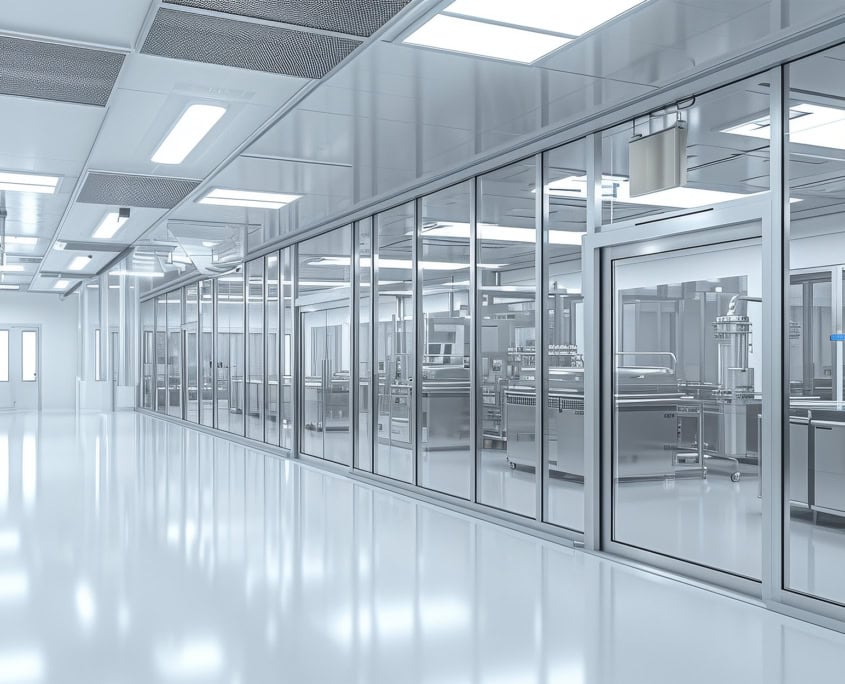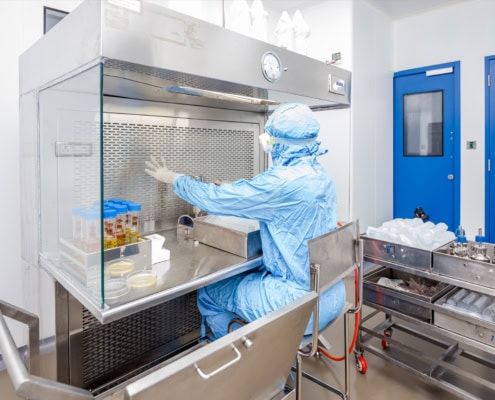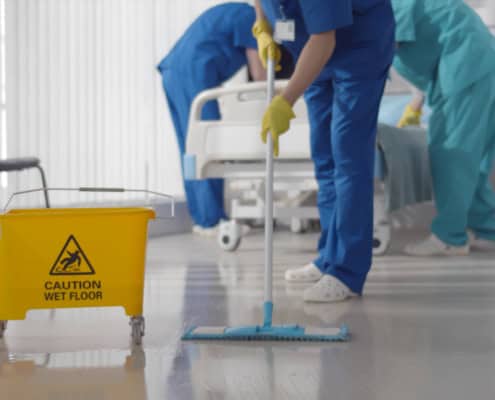In clean rooms, even the tools used for cleaning can become a source of contamination if they’re not chosen carefully. Standard commercial cleaning gear—like cotton mops, unfiltered vacuums, or scented disinfectants—can introduce fibers, chemicals, and particles that compromise the integrity of the controlled environment.
That’s why clean room cleaning science depends on equipment specifically designed to meet strict clean room requirements. These tools are engineered to reduce particle generation, withstand disinfection, and function without disrupting airflow or introducing static.
Some of the most common and critical equipment includes:
- HEPA-filtered vacuums: Used to remove microscopic particles from floors and surfaces without redistributing them into the air
- Non-shedding mops and wipes: Made from materials like polyester or microfiber that don’t release fibers or debris, even during extended use
- Stainless steel carts and tools: Easy to sanitize, corrosion-resistant, and compatible with clean room disinfectants
- Specialized mop buckets with dual-basin systems: Separate clean and dirty fluids to prevent cross-contamination during mopping procedures
In addition to these supplies, some clean rooms utilize supplemental equipment like ionized air blowers or air showers to reduce static or remove particulates from personnel before entry. While not part of routine cleaning, these technologies are part of the broader contamination control strategy that cleaning teams must work around and understand.
Ultimately, the use of the right clean room cleaning equipment ensures that every cleaning task supports the goal of maintaining particle control, not accidentally making things worse.











